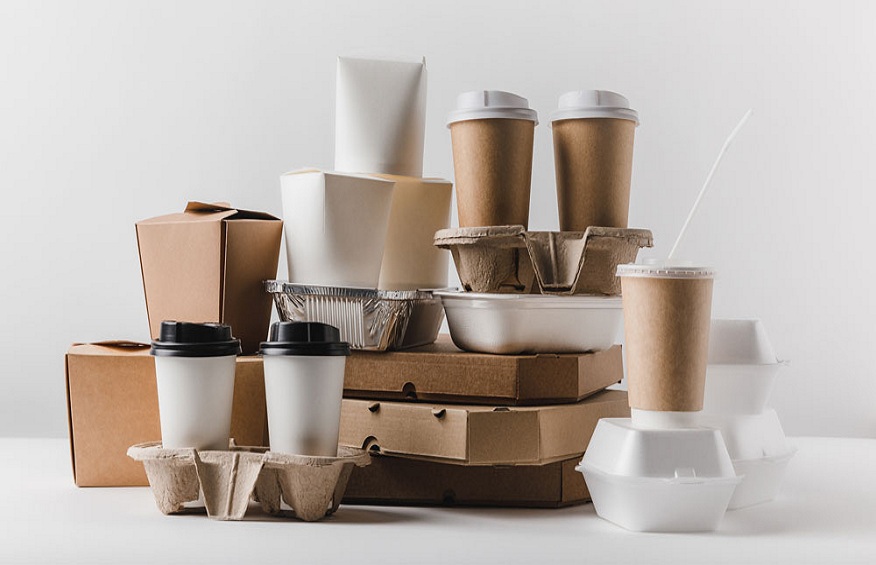
Food packaging has three main purposes: to enclose the product, to preserve it against external effects and harm, and to tell users about its ingredients and nutritive values. The importance of accountability, usability, and security detection as additional functionalities is rising. The objective of food packaging is to cost-effectively enclose food while meeting quality standards, and consumer demand, preserving safe food and lowering the ecological impact. For all this, one needs to find the best food packaging company.
Food preservation must be balanced with other concerns, such as energy and resource expenditures, growing social and ecological awareness, and restrictive regulations on pollution and municipal hazardous trash disposal. If you are looking for the benefits of food packaging, then check out the listed benefits which can provide you with a clarification about the usefulness of food packaging.
Why food packaging is beneficial?
. Resistance
Food packaging can prevent food degradation, preserve the positive benefits of processing, prolong storability, and preserve or improve food freshness and safety. Packaging thus offers resistance against three main categories of outside influences: alkaloid, microbial, and environmental.
Chemical protection reduces configurational alterations brought on by external factors including exposure to gasses (o2), humidity, or radiation. A chemical barrier can be created using numerous different packing materials. Few packages are made entirely of metallic or glass because closure equipment is often added to make stuffing and unloading easier. Glass and metals offer a pretty much perfect shield to chemicals as well as other environmental toxins.
Closure devices might be made of materials that permit only very little leakage. For instance, sealing components used in metals can lid to enable closing after stuffing as well as polymer caps used to ease closing both have a certain penetration to gases. Despite generally being more permeable than glass or metal, plastic packing includes a variety of barrier qualities.
Food is physically protected against mechanical harm with protection against shock and motion experienced during circulation. Physical barriers are frequently used as cargo containers and as wrapping for delicate food products like eggs and fruits and veggies because they fight back damaging effects, scratches, and destroying serious harm. They are usually made from thick paper and cardboard components. The proper physical packaging also shields customers from a variety of risks. For instance, child-resistant locks make it more difficult to obtain things that could be harmful. Additionally, the risk from shattered glass boxes has decreased as a result of the switch to plastic containers for goods like shampoo and soda cans.
. Knowledge and promotion
A company’s packaging serves as its standard bearer and is frequently the primary introduction buyers have about the item before deciding to buy it. Therefore, in a market that is competitive, packaging that is unique or original might increase sales. The packaging may be made to improve the product’s image and distinguish it from the competitors. For instance, wider labels could be utilized to fit ingredients. Additionally, the packaging informs the buyer. The regulatory criteria for product selection, nutritive quality, ingredient disclosure, gross weight, and producer data, for instance, are satisfied by package labelling. Furthermore, the package transmits crucial details about the product, including pricing, brand recognition, and preparation directions. These improvements could all affect trash management.
. Simplicity
Packaging innovation is highly influenced by convenience characteristics including product transparency, and simplicity of access, carrying and discarding. As a result, the packaging is essential in reducing the time and effort needed to make and distribute food. The use of simmer bags, microwave-safe packing, and oven-safe pans enables customers to prepare almost minimal food before cooking a full meal. New seal styles offer particular distributing characteristics, resale and simplicity of opening. For instance, a biscuit producer recently launched a flexible bag featuring a part that can be sliced to provide accessibility to the biscuits. The aperture is covered by a membrane that has a resin coating seal and enables reclosure once reopened. Current retail models that give customers the ease of one-stop shopping and access to foods from all over the globe have been made possible by advancements in packaged foods. These practical characteristics boost a product’s worth and chance to compete, but they may also influence how much and what kind of packaging trash needs to be disposed of.
. Indication of contamination
Due to the deliberate falsification of food and drug items, unique packaging characteristics have been developed to minimize or eliminate the possibility of fraudulent activities. Banding, unique gaskets, breakage locks, and distinctive print on container bottoms or fiberglass containers, like designs or words that fundamentally transform upon opening, are a few examples of contaminating characteristics. Holograms are another form of special printing that is difficult to replicate. Contamination evident packaging typically needs additional packing materials, which makes disposal problems worse, but overall, the advantages exceed any disadvantages. A thermal sealing utilized on medical packing that is molecularly formulated to change color when broken is an example of a tamper-evident characteristic that doesn’t require extra packaging.
. Substances Utilized Package Food
The life span of a packaged food is significantly affected by the style and structure of the package. The integrity and originality of the product are maintained during transportation and storage with the appropriate food packaging materials and techniques. Glass, metals (aluminum foil, tinplate, and tin-free steel), paper or cardboards, and polymers have all historically been utilized in food packaging. Additionally, a greater range of polymers for both stiff and flexible forms have been developed. To take advantage of each object’s decorative or practical qualities, food packaging today frequently includes various materials. Advancements in development may affect the environmental impact of packaging.
Conclusion
Other uses for packing include serving as containment for domestic goods or a container for extras (such as the insertion of a prize, complementary item, or voucher). The possibility of using or reusing packaging prevents or delayed entrance into the waste stream. Companies that produce food add distinctive codes to the packaging tags of their goods, enabling them to monitor those goods as they are distributed. Codes can be scanned manually or automatically and come in a variety of forms. If you have some particular requirements, then it will be beneficial for you to search for a flexible packaging company.



